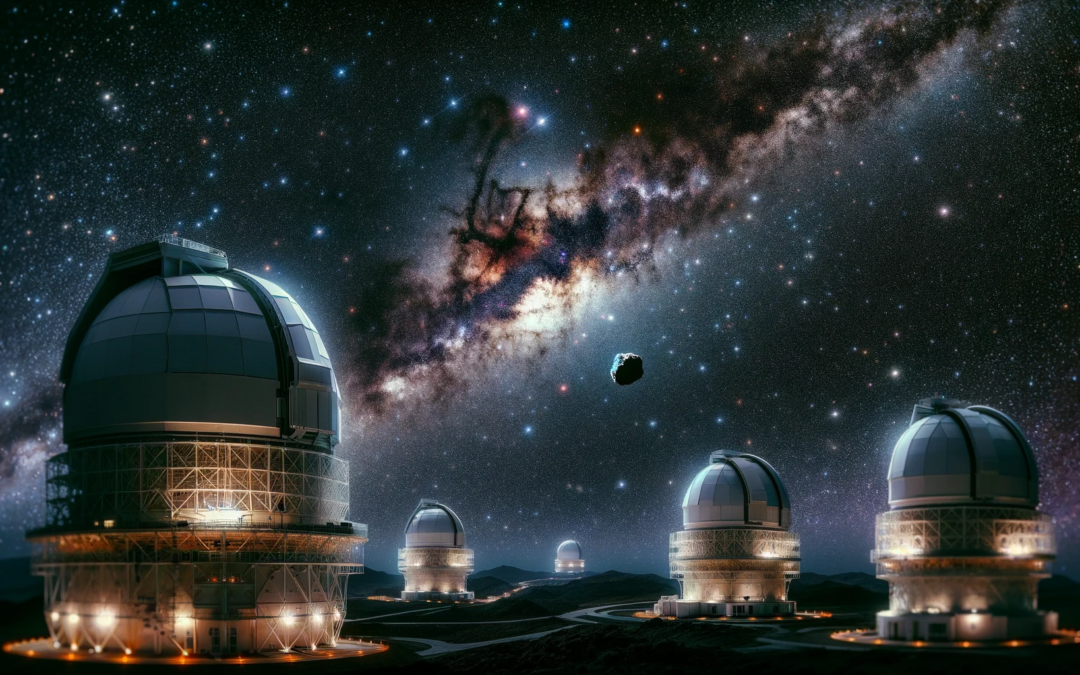The Protagonist: The ‘Lost’ Asteroid
In the expansive tapestry of the cosmos, where celestial bodies dance to the eternal rhythms of gravity and motion, a narrative of suspense has recently unfolded, capturing the public’s imagination. A ‘lost’ asteroid, a wanderer in the vastness of space, has sparked conversations and concerns with a 1 in 11 million chance of colliding with Earth in 2024.
To understand the heart of this cosmic tale, one must first comprehend the nature of our protagonist – the ‘lost’ asteroid. This celestial object, akin to a nomad wandering the interstellar deserts, was initially observed and then, like a whisper in the night, seemed to vanish from our telescopic gaze. However, the notion of a ‘lost’ asteroid is not a rarity in the grand scheme of astronomical studies. These space rocks often disappear from view due to their small size, fast speed, and the vast distances involved.
NASA’s Stance: A Symphony of Science and Assurance
NASA, a beacon of astrophysical expertise, has responded to the public’s growing intrigue and concern with a blend of scientific acumen and reassuring precision. The agency’s approach is multi-faceted:
- Observational Vigilance: NASA’s network of telescopes and observatories across the globe and in space, like sentinels watching over the night, have been tasked with relocating and tracking the asteroid. The Center for Near-Earth Object Studies (CNEOS) plays a pivotal role in this ongoing surveillance.
- Probabilistic Analysis: The 1 in 11 million chance of impact, a figure that blends statistical science with astronomical observations, is continually refined as more data is gathered. This probability, though seemingly minute, is not dismissed by NASA. Instead, it is treated with the seriousness befitting any potential threat from our cosmic neighborhood.
- Public Communication: In an effort to demystify and inform, NASA has launched a series of public communications, ranging from press releases to social media updates. These are designed to educate the public about the nature of the asteroid, the science of tracking near-Earth objects (NEOs), and the real risks involved.
- Collaboration with Global Partners: NASA is not alone in this cosmic vigil. The agency collaborates with international space agencies and astronomical organizations, creating a network of shared knowledge and resources.
- Planetary Defense: NASA’s Planetary Defense Coordination Office (PDCO) is at the forefront of developing strategies and technologies to mitigate the impact of any NEO that poses a significant threat to Earth.
Ethical Considerations: Balancing Alarm and Assurance
In this narrative, NASA treads a delicate line between raising unnecessary alarm and providing rightful assurance. The ethical dimension of communicating potential cosmic threats involves a careful balancing act – ensuring that the public is informed and prepared, but not unduly alarmed.
The Bigger Picture: Our Place in the Cosmos
This episode, a mere blip in the cosmic timeline, offers a profound reflection on our place in the universe. It prompts a contemplation of our vulnerability and the need for a deeper understanding of the cosmos. The pursuit of space science, therefore, is not just a quest for knowledge but a journey towards the existential security of our species.
The Future: Vigilance and Preparedness
As 2024 approaches, NASA’s vigilance continues. The quest to rediscover and track the ‘lost’ asteroid is not just about averting a potential cosmic collision. It is about humankind’s resilience, our ability to harness science to safeguard our future, and our eternal quest to understand the mysteries of the universe.
This tale of a ‘lost’ asteroid and Earth’s potential cosmic rendezvous is a reminder of the fragility and wonder of our existence. As we gaze upwards, let us not only wonder at the beauty of the night sky but also appreciate the ceaseless efforts of those who watch over it, ensuring that our celestial journey continues unimpeded by the unknown vagaries of space.










